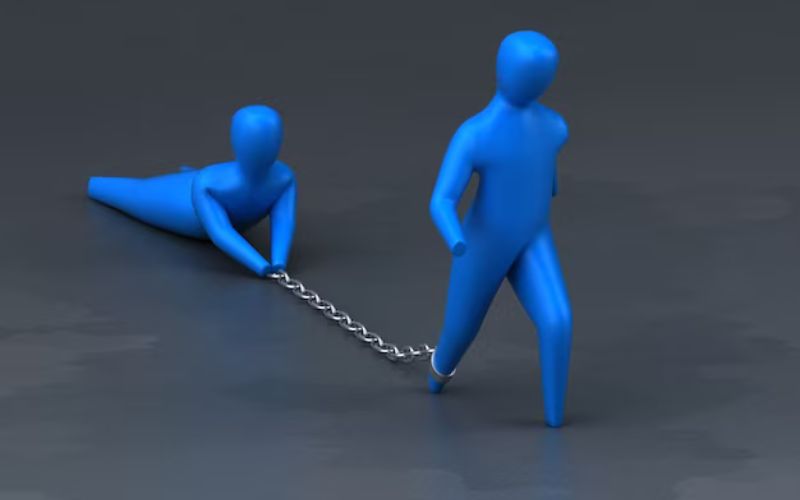Some Real Life examples of friction are Walking on a Sidewalk, Car Breaking on a Road, Rubbing Hands Together, Writing with a Pen on Paper, and Sliding Down a Slide at a Playground.
Friction is a force that opposes the movement of one solid object over another. It can be divided into two types: static friction, which prevents surfaces from sliding across each other, and kinetic friction, which occurs between surfaces in relative motion. The frictional force is created by the contact and slide of two surfaces and is influenced by factors such as surface texture and the force pushing the surfaces together.
Examples Of Friction
Top 17 examples of friction are given below;
✪ Walking on a Sidewalk
The interaction between the soles of shoes and the sidewalk creates friction, allowing us to walk.
Scenario
- Contact: Shoe soles make contact with the rough surface of the sidewalk.
- Frictional Force: The frictional force prevents slipping, enabling smooth walking.
✪ Car Braking on a Road
When a car applies brakes, the friction between the brake pads and the surface of the road slows down the vehicle.
Scenario
- Brake Engagement: Brake pads press against the rotating wheels.
- Frictional Force: The frictional force opposes the wheel’s motion, leading to deceleration.
✪ Rubbing Hands Together
Rubbing hands together generates friction, creating warmth through the conversion of kinetic energy to thermal energy.
Scenario
- Hand Movement: Hands are rubbed together.
- Frictional Force: The frictional force generates heat due to the resistance between the hands.
✪ Writing with a Pen on Paper
The tip of a pen and the paper’s surface create friction, allowing the ink to transfer and form written characters.
Scenario
- Pen Movement: The pen is moved across the paper.
- Frictional Force: Friction between the pen and paper enables writing by facilitating ink transfer.
✪ Sliding Down a Slide at a Playground
The interaction between clothing and the surface of a slide creates friction, controlling the speed of descent.
Scenario
- Slide Descent: A person slides down the slide.
- Frictional Force: Friction between clothing and the slide regulates the sliding speed.
✪ Turning a Doorknob
When turning a doorknob, the friction between the hand and the knob allows for effective rotational movement.
Scenario
- Hand Rotation: The hand applies force to turn the doorknob.
- Frictional Force: Friction facilitates the rotational movement, opening or closing the door.
✪ Using Sandpaper on Wood
Sandpaper on wood demonstrates frictional force in material removal processes, smoothing or shaping the wood surface.
Scenario
- Sandpaper Application: Sandpaper is applied to the wood.
- Frictional Force: Friction between the sandpaper and wood removes material, shaping the surface.
✪ Climbing a Rope
When climbing a rope, the friction between the hands and the rope prevents slipping, allowing upward movement.
Scenario
- Hand Gripping: Hands grip the rope.
- Frictional Force: Friction between the hands and the rope enables upward climbing.
✪ Skiing Down a Slope
The interaction between skis and snow involves friction, controlling the skier’s speed and direction.
Scenario
- Ski Descent: Skis make contact with the snowy slope.
- Frictional Force: Friction between skis and snow governs speed and direction.
✪ Using a Screwdriver
When using a screwdriver, the interaction between the tool’s tip and the screw’s surface creates friction, facilitating the turning motion.
Scenario
- Screwdriver Application: The screwdriver is inserted into the screw head.
- Frictional Force: Friction enables the turning motion, driving the screw.
✪ Bringing Hands to a Stop on a Wet Surface
On a wet surface, bringing wet hands to a sudden stop involves friction, preventing continued motion.

Scenario
- Wet Hands Movement: Wet hands are brought to a sudden stop.
- Frictional Force: Friction between wet hands and the surface prevents further movement.
✪ Using a Pencil Eraser on Paper
Erasing pencil marks involves friction between the eraser and paper, removing graphite particles.
Scenario
- Eraser Application: The eraser rubs against the pencil marks on paper.
- Frictional Force: Friction between the eraser and paper removes graphite, erasing the marks.
✪ Braking a Bicycle
Bicycle brakes create friction between the brake pads and the wheel rims, slowing down or stopping the bike.
Scenario
- Brake Application: Brake levers are pressed.
- Frictional Force: Friction between brake pads and wheel rims slows down the bicycle.
✪ Turning Pages in a Book
When turning pages in a book, the interaction between fingers and the paper involves friction, allowing for controlled page-turning.
Scenario
- Page Turning: Fingers grip the page to turn it.
- Frictional Force: Friction between fingers and paper facilitates controlled page-turning.
✪ Bringing a Car to a Halt on Icy Roads
On icy roads, bringing a car to a stop involves friction between the tires and the icy surface, controlling deceleration.
Scenario
- Brake Engagement: Brakes are applied on icy roads.
- Frictional Force: Friction between tires and ice slows down the car.
✪ Using a Stapler
Staplers utilize friction when driving staples through sheets of paper, binding them together.
Scenario
- Stapler Application: The stapler is pressed onto a stack of papers.
- Frictional Force: Friction facilitates the movement, driving the staple through the paper.
✪ Using a Thread and Needle
Sewing involves the frictional interaction between the needle and thread, creating stitches.
Scenario
- Needle Movement: The needle passes through the fabric.
- Frictional Force: Friction between the needle and thread creates stitches in the fabric.
Frictional force plays a vital role in numerous everyday activities, from walking and writing to driving and sports. Understanding these real-life examples sheds light on the omnipresence and significance of friction in our daily lives.

